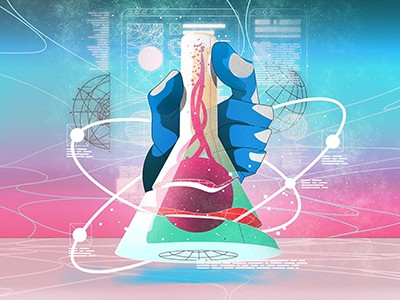The Means of Prediction: How AI Really Works (and Who Benefits) Maximilian Kasy Univ. Chicago Press (2025)
Have you felt dizzy from the constant flood of articles claiming that artificial intelligence will either boost economic productivity and be humanity’s best friend, or become superhuman and wipe everyone out? There’s a reason for the confusion — it is not accidental.
In The Means of Prediction, economist Maximilian Kasy argues that one side of this polarized debate is just cashing in on the current wave of techno-enthusiasm. This group, led by wealthy investors and technology executives who insist that AI tools will solve all of humanity’s problems, is opposed to the models being regulated by governments. At its core, Kasy says, it’s a calculated power grab. Meanwhile, some philosophers and others warning us about apocalyptic AI futures are also funded by large donations tied to those fears. In short, both camps have something to sell.
How AI is reshaping science and society
However, given the scale of investment in AI, the public needs to have a clear grasp of what the technology really means for our future, especially if the economy were to start haemorrhaging jobs. Kasy’s book, which serves as an introductory crash course, suggests that by developing basic literacy about how AI works and what prediction engines do, people can learn to distinguish genuine progress from corporate spin.
He also argues that the public should see the AI roll-out as a pressing issue of growing inequality and concentrated power. Indeed, the book’s title alludes to political theorist Karl Marx’s argument that whoever controls the ‘means of production’ controls the structure and direction of society.
Broader public debate over who gets to pick the objectives of AI systems is crucial, he argues. AI-driven prediction engines already influence hiring decisions at big corporations, shape what content is shown on social-media feeds and can help the military to select targets for air strikes.
How AI agents will change research: a scientist’s guide
But for the public to engage in the debate effectively, AI’s inner workings must be made accessible. Kasy devotes a substantial part of his book to explain, in plain language, how the technology works, unpacking terms such as machine learning and deep learning. A useful section called ‘neural nets are not artificial brains’ explains that neural networks — computer systems made of interconnected nodes that learn patterns from data — do not mimic how the human brain functions.
Taking down this metaphor is important, because it’s one of the main ways in which the tech industry obscures what AI really is. In practice, AI systems are built and controlled by companies to serve commercial goals, not to think or feel in the way humans do.
Kasy goes on to examine the required framework for regulating AI, with discussions on fairness, explainability and privacy. He argues that decisions about how these systems are designed and deployed should not be left to corporate boardrooms alone. But his perspective is that of an academic, and regulation in the real world has to actually work.
Dealing with bias
If you wanted a breezy introduction to AI but don’t have the time or money for the author’s machine-learning or economics courses at the University of Oxford, UK, this book offers a high-level overview. But its tone can feel pedantic, overly technical and long-winded. There are few fresh examples of what can go wrong with algorithms — or deeper analyses of familiar case studies — and much of the discussion remains theoretical.
Take fairness, for example. The author introduces the concept of merit-based discrimination — hiring someone less qualified for non-monetary reasons. He illustrates this with a hypothetical hiring algorithm designed to pick the most ‘productive’ workers. In this set-up, any unfair treatment would simply mean that the company is not maximizing profits. Similarly, as long as hiring decisions maximize profit, the company is assumed to be fair.
Why an overreliance on AI-driven modelling is bad for science





